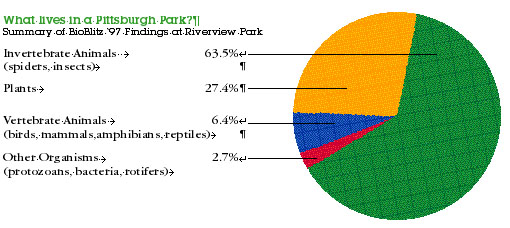

Not surprisingly, since insects are the most diverse group of organisms in the world, invertebrate animals (those without backbones, including insects, spiders, and worms) were the most numerous group at Riverview, with 740 species, or almost 64% of the total number. Plants were the next largest group with 319 species, followed by vertebrate animals (mammals, birds, amphibians, and reptiles -- 74 species), and all other organisms (mostly rotifers, protozoans, and bacteria). Of the invertebrates found in Riverview Park, most were insects, including 193 species of beetles, 180 moth and butterfly taxa, and 102 different types of flies!
Of special interest was one specimen of a rare long-horned beetle (Obrium rubidum, Cerambycidae), which literally fell out of the trees at Riverview. Prior to the BioBlitz, this species had not been collected in western Pennsylvania since 1929, and was represented in the Carnegie Museum of Natural History entomological collection by just 12 specimens. Botanists found five-leaf (Akebia quinata, Lardizabalaceae), an introduced woody vine, which previously had not been collected in western Pennsylvania, growing in the park as well as Amur honeysuckle (Lonicera maackii, Caprifoliaceae), which was previously known from just a few localities in this part of the state. Amur honeysuckle was introduced to the U.S. as an ornamental shrub, but starting in the 1980’s it has become an aggressive invader of natural habitats. Illinois, Ohio, and Kentucky have already adopted policies to eliminate Amur honeysuckle, and documentation of its occurrence in a Pittsburgh park is important information for future park management decisions.
Pittsburgh BioBlitz '97 was presented by the Carnegie Museum of Natural History (CMNH) and organized by the Council for CMNH with support from The Schenley Conservancy (now Pittsburgh Parks Conservancy) and Pittsburgh Citiparks. Pittsburgh BioBlitz was the first collaborative effort in the country between a natural history museum, an urban park conservancy, and a city park system in the attempt to document all species in a city park.
Sue A. Thompson is assistant curator of Botany, Carnegie Museum of Natural History.
Contents |
Highlights |
Calendar |
Back Issues |
Museums |